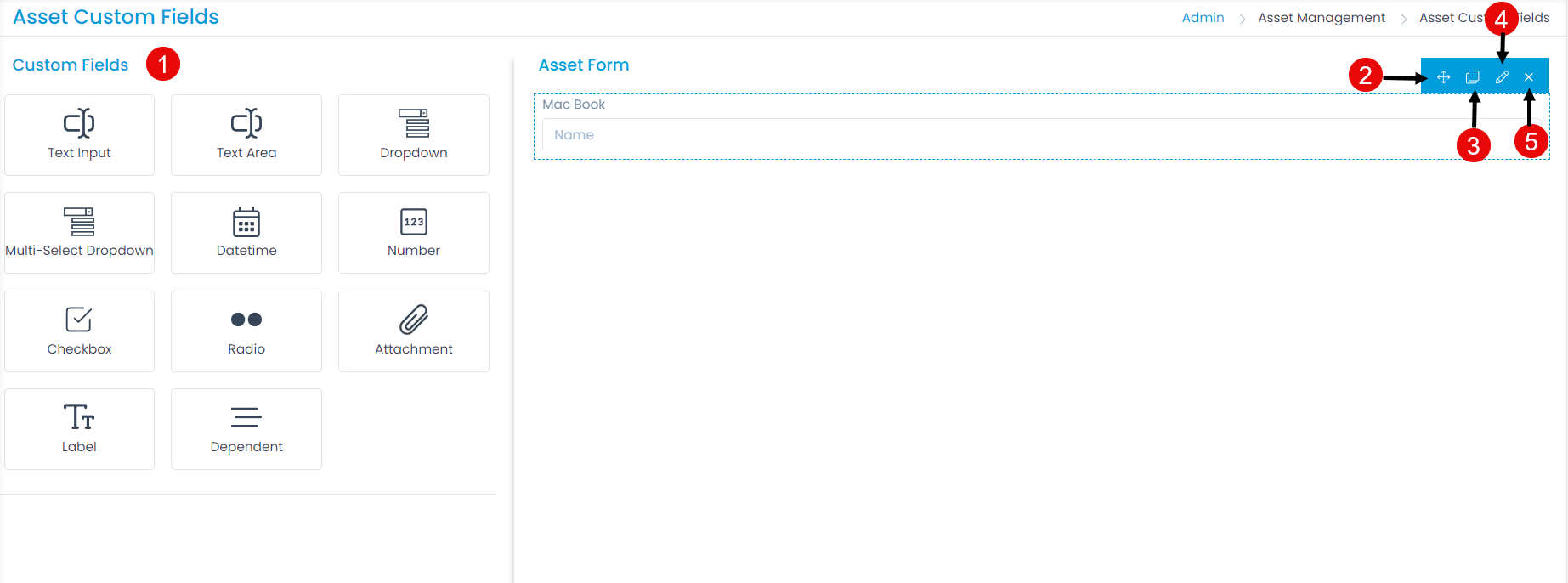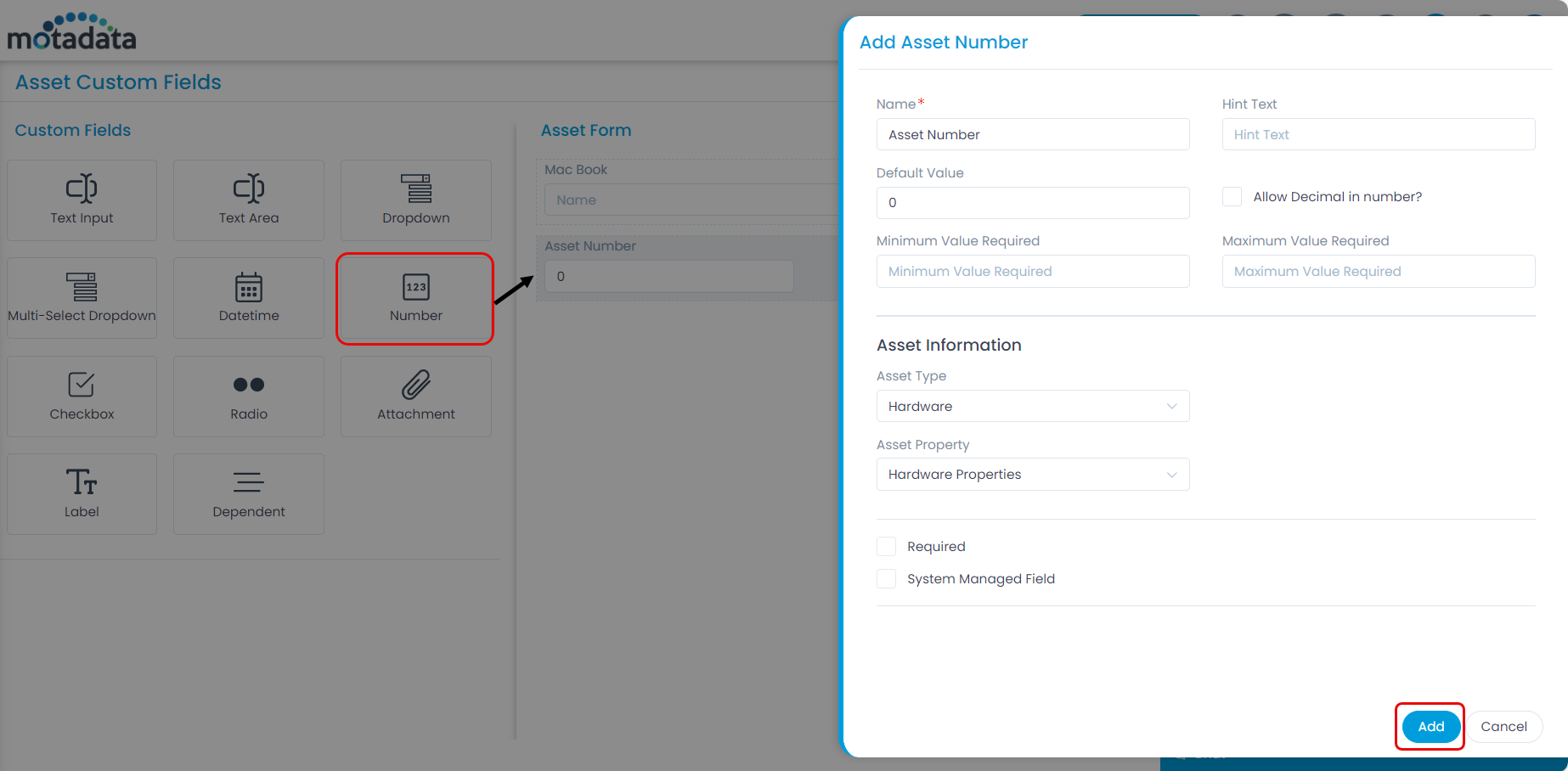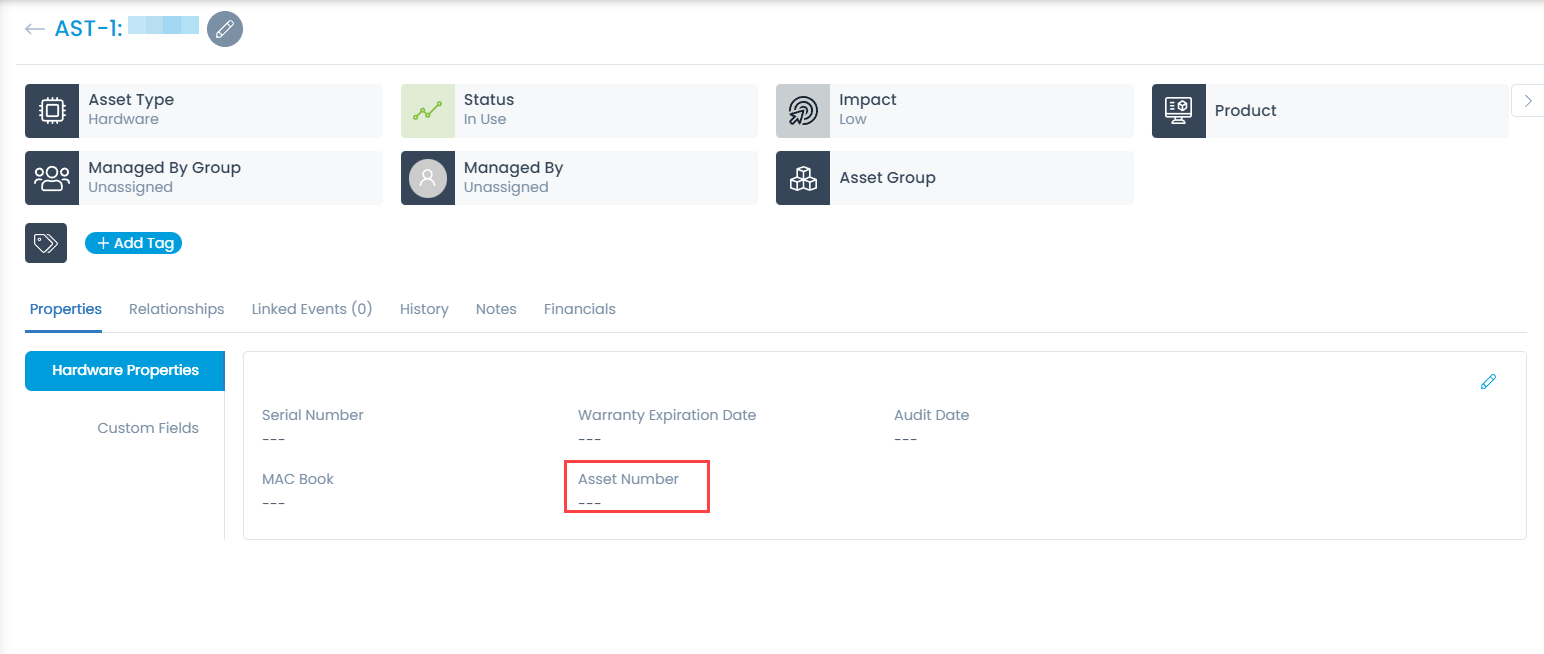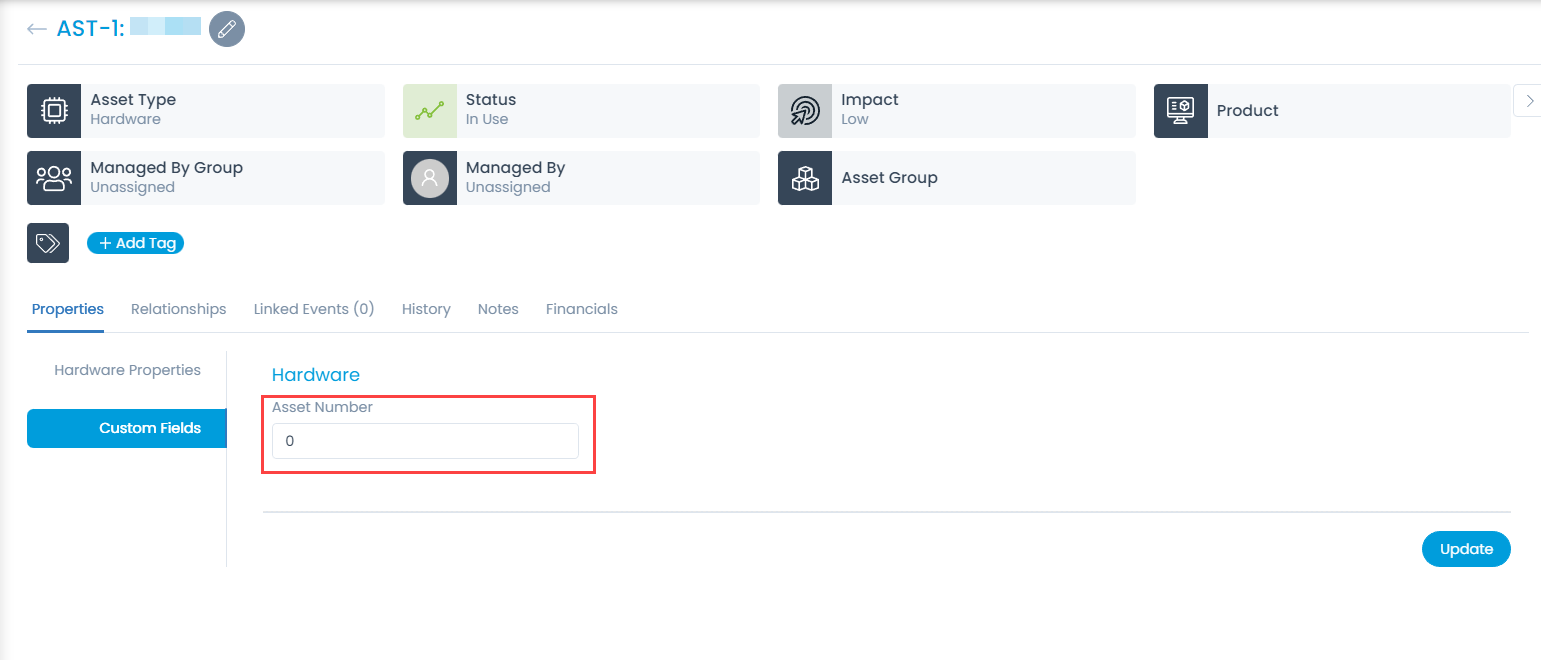Asset Custom Fields
The layout of asset management has all the fields required to manage the assets of an organization. However, to meet the organization’s needs, you can modify the default template and add new fields. The fields can later be used in the automation settings also.
To view the Asset Form, navigate to Admin > Asset Management > Asset Custom Fields and the below page appears.

Here, you can customize the form using the below options:
- Field Pallet: You can drag and drop the fields from the pallet to add into the form.
- Re-Order: You can drag and drop the fields to change the order of the form.
- Duplicate: You can create duplicate fields from the custom fields.
- Edit: You can edit the fields and make them mandatory, show on asset form, or change their characteristics.
- Remove: You can delete the custom fields.
Deleting the custom field will remove it and its data from all the related requests. Also, the Workflows, Scenarios, SLAs, and other components containing these custom fields might be affected. Kindly review the impact before proceeding with the removal.
Example Scenario: Every asset in an organization requires an Asset Number. This is the number by which a technician will add the asset.
Number
To add the Number custom field, drag and drop it on the form in the right-hand side, and a popup appears.

Enter the following details:
- Name: Enter the name of the field.
- Hint Text: Enter the text to appear by default. It appears in grey color.
- Default Value: Enter the default value of the field.
- Allow Decimal in number?: Enable to allow the user to enter decimal numbers in the field.
Asset Information
- Asset Type: Select the type of asset for which this field should be available. The options are: Hardware, Software, Non-IT, and Consumable Assets. If Hardware, Software, or Non-IT Assets option is selected, select the Asset Property or Asset Component in which the field will be available.
If Consumable Asset is selected, it will be available in the Consumable Assets section while creating the asset and the Custom fields section on the Properties Details page. For Example: If Hardware Asset Type is selected and Hardware Properties is selected as the Asset Property. The field becomes available in the Hardware Properties tab of Hardware Details Page. If Asset Property is left blank the field appears in the Custom Fields tab of the Hardware Details page.


- Required: Enable to make the field mandatory on the asset form.
- System Managed Field: Enable to make the field as non-editable. It will display values from the dependents. You can enable this for Text Input, Text Area, Dropdown, Datetime, Number, and Radio fields.
- If the field is marked as System Managed Field, then it can not be marked as Required.
- Only custom fields which are not associated with Asset Property or Component are allowed to mark as required.
Once done, click Add. You can then re-arrange its location, create a duplicate field, edit, or delete it if required. Similarly, you can add other custom fields. For more details on other fields, refer to the link Request Form.